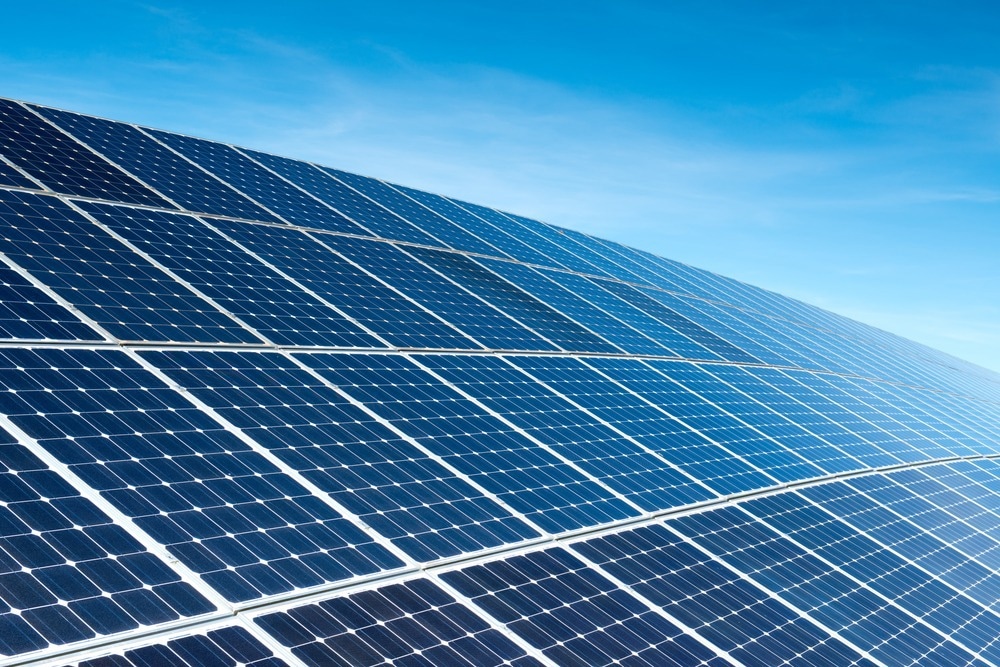Cu-based ternary chalcogenides have exhibited great potential as cheap, eco-friendly substitutes for heavy-metal-based photosensitizers. Cu-based selenium quantum dots produced by sequential ionic layer adsorption and reaction (SILAR) have an ideal energy band gap, attractive photoresponsivity, and light absorption.

Study: CuBiSe2 Quantum Dots as Ecofriendly Photosensitizers for Solar Cells. Image Credit: Gyuszko-Photo/Shutterstock.com
These beneficial characteristics motivated a study published in the journal ACS Sustainable Chemistry & Engineering, which investigated Cu-based selenium quantum dots as light sensitizers for eco-friendly solar energy applications.
The use of these benign and abundant materials, in conjunction with a low-temperature sol-gel process, could meet the manufacturing costs and prove to be eco-friendly as well.
The Struggle for Green Photovoltaics
Developing high-performance photovoltaic (PV) materials made of non-toxic and abundantly available components is a primary focus in fulfilling the ever-increasing demands for power.
The small-bandgap substances that have evolved for this use in the last decade are largely hard rock chalcogenides and halides. However, the use of these molecules in future photovoltaic systems is under question because of rising prices, availability challenges, and the damage they may cause to the environment.
While this study concentrated on mitigating the environmental toxicity problems raised by these elements and making them as eco-friendly as possible, the development of affordable and green photovoltaics is yet to be realized.
Ternary Chalcogenides of Silver and Copper
Ternary chalcogenides of class ABX2 (I-III-VI) are gaining popularity because of their chemically adjustable bandgap, great absorption coefficient, and eco-friendly nature.
Silver-based materials were the first triple chalcogenides to be used in photovoltaic modules and have already achieved a power conversion efficiency (PCE) equal to 9% in a short period.
Because of their cost factor, copper ternary chalcogenide nanocrystals are more advantageous than silver-based chalcogenides.
Another new family of photo absorbers with a power conversion efficiency of more than 15% is CuInX2 (X = S, Se); nevertheless, the scarcity and costly nature of indium (In) is a major hurdle in the way of large-scale practical manufacturing.
As a result, swapping indium with bismuth has been considered. Cu-based selenium quantum dots have been used in solar devices, although their power conversion efficiency of 0.68% remains relatively low.
The main shortcoming of previous work on such ABX2 chalcogenides was that their quantum dots (QDs) were manufactured via solution-processed dispersion or evaporation methods, which are unsuitable for real-time operations, as opposed to the durable SILAR approach employed in this study.
Theoretical research on these ABX2 materials is quite encouraging, with power conversion efficiencies predicted to exceed 20%.
Highlights of the Research
In this regard, Cu-based selenium quantum dots, a selenide counterpart of Cu-based selenium, were produced and studied as photo absorbing components for solar cells.
These Cu-based selenium quantum dots were subjected to a detailed investigation of their material properties, optical characteristics, and performance parameters.
The charge transport dispersion kinetics across the surfaces of the Cu-based selenium quantum dots revealed the requirement for passivation methods when studied using resistance spectrometry.
To improve device efficiency, an in-depth analysis of the tandem design of CuBiSe2/CuBiS2 devices was conducted for the first time. Furthermore, nickel oxide was employed as the layer that transports holes to ensure clean manufacturing and make the Cu-based selenium quantum dots eco-friendly.
The developed twin layout replicated a type-1 heterostructure and improved device efficiency by drastically lowering recombination losses across the active detailed models.
This research laid the foundations for further research into the promise of these triple heterojunction quantum dots for various optical applications.
Important Findings
Cu-based selenium quantum dots, which are eco-friendly and abundantly available, were effectively proven as photo-absorbing materials in solar cells. SILAR-synthesized cost-effective and liquid-resistant quantum dots performed well in a solar cell.
The CuBiS2 quantum dots passivated the core CuBiSe2 and removed the majority of back transmission electron recombination across the interfaces inside a type-1 heterostructure showed by multiple spectroscopic methods.
The inadequate band energy synchronization between the photosensitizer and the hole transport layer was a major concern that must be addressed to enhance the device's efficiency further.
This work was significant in terms of employing a robust manufacturing approach and utilizing unique green quantum dots, paving the way for their implementation in other optoelectronic devices.
Reference
S, A., & Balakrishna, R. G. (2022). CuBiSe2 Quantum Dots as Ecofriendly Photosensitizers for Solar Cells. ACS Sustainable Chemistry & Engineering. Available at: https://pubs.acs.org/doi/10.1021/acssuschemeng.2c04333
Disclaimer: The views expressed here are those of the author expressed in their private capacity and do not necessarily represent the views of AZoM.com Limited T/A AZoNetwork the owner and operator of this website. This disclaimer forms part of the Terms and conditions of use of this website.